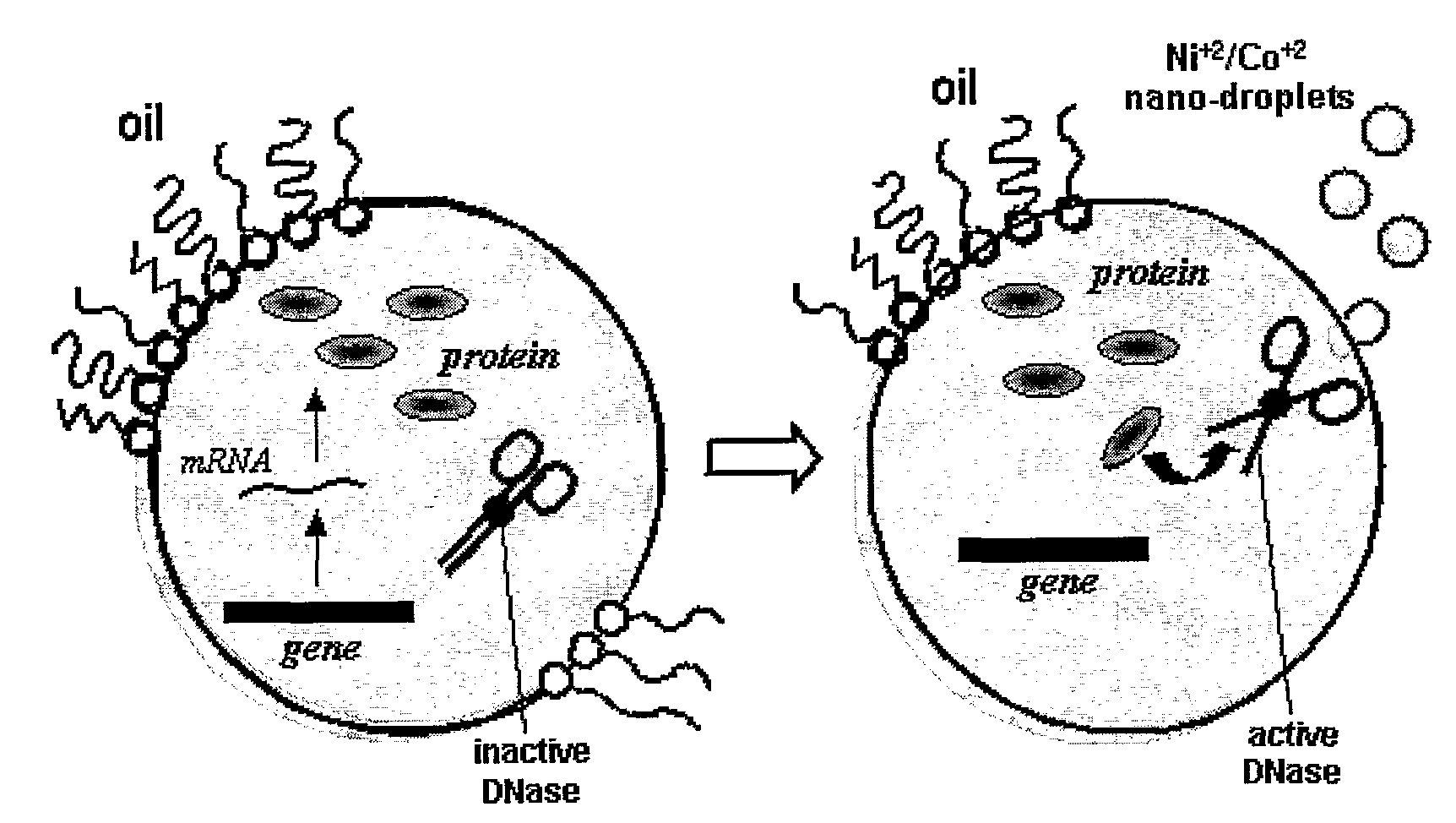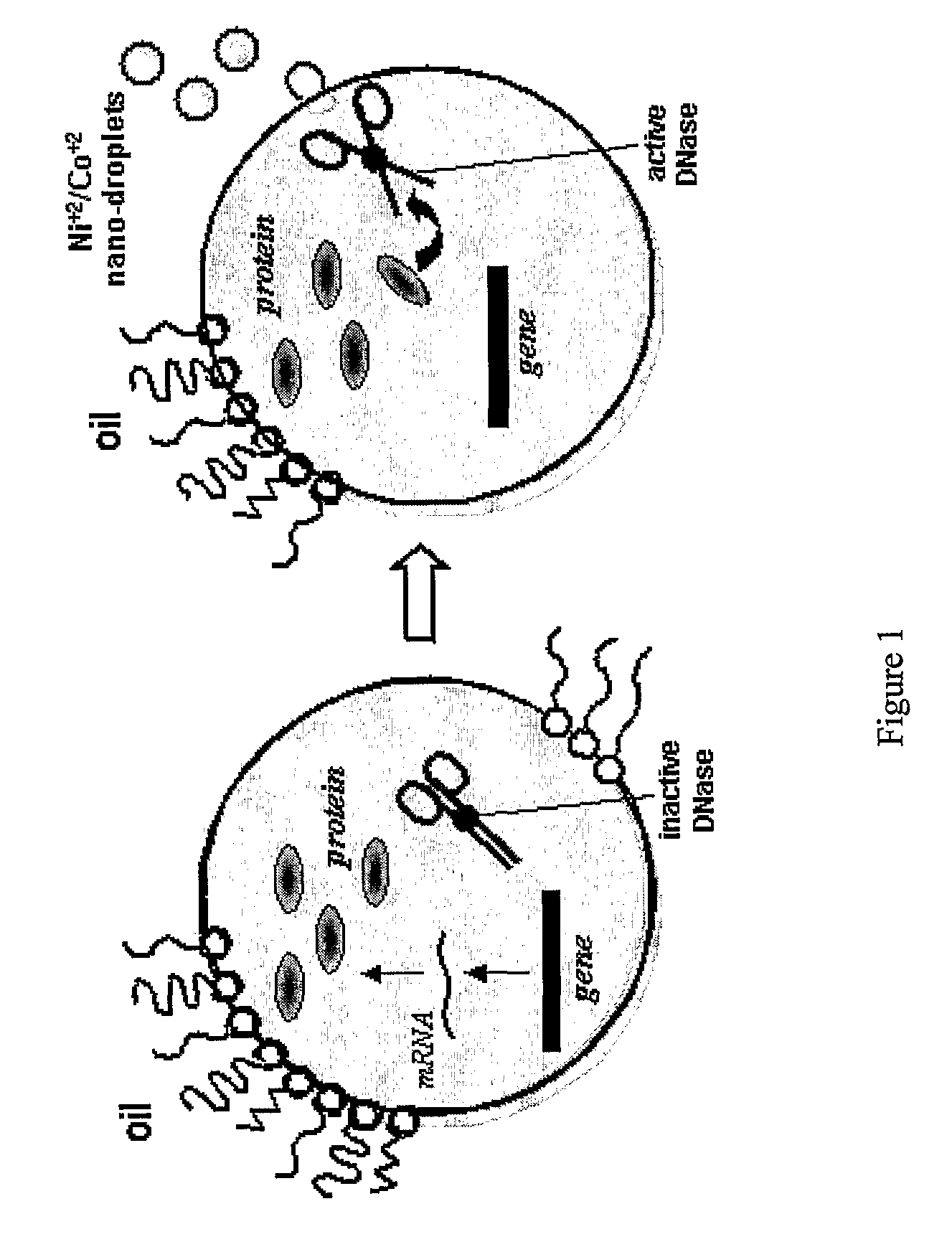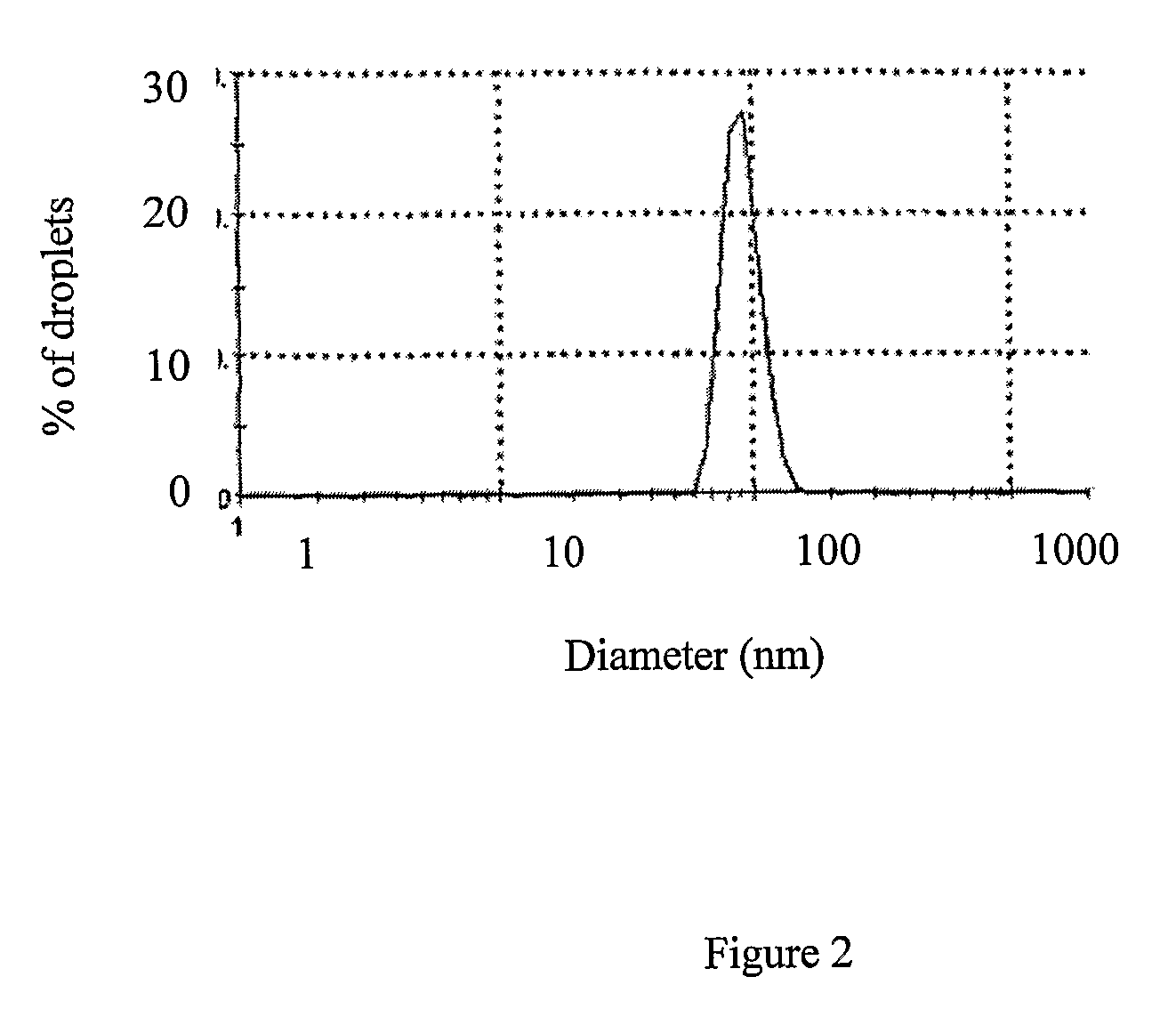Directed Evolution and Selection Using in Vitro Compartmentalization
a technology of compartmentalization and evolution, applied in the field of compartmentalized libraries, can solve the problems of poor inhibitors, proteins or peptides that are poor inhibitors, and the selection of enzymatic activities merely through assessment of binding abilities is less effective than a direct selection for high turnover rate, and achieves easy modulation and high enrichment.
- Summary
- Abstract
- Description
- Claims
- Application Information
AI Technical Summary
Benefits of technology
Problems solved by technology
Method used
Image
Examples
example 1
The In Vitro Evolution of New Immunity Protein Variants
[0099] Initially, the ColE9 and Im9, ColE2 and ColE7 genes were PCR-amplified from plasmids pKC67, pKH202 and pColE2, respectively and cloned into pIVEX 2.2b (Roche) via NcoI and SacI sites to give pIVEX-E9, pIVEX-Im9, pIVEX-E2 and pIVEX-E7. Preparation of pIVEX-ΔOPD is described elsewhere (Griffiths and Tawfik, 2003, op. cit.). Im9 and ΔOPD PCR fragments for selection (FIG. 1) were amplified using primers LMB2-2 Bc appending a biotin (Biotin-5′-CAGGCTGCGCAACTGTTG-3′; SEQ ID NO:1) and LMB-3 (5′-GTCATAGCTGTTTCCTG-3′; SEQ ID NO:2). The reactions were cycled 30 times (95° C. 0.5 min, 55° C. 0.5 min, 72° C. for 0.5 min -2 min. depending on the fragments length). The ColE2, ColE7 and ColE9 genes were PCR-amplified from the ligation mixtures of pIVEX-E9, pIVEX-Im9, pIVEX-E2 and pIVEX-E7, using primers LMB2-6 (5′-ATGTGCTGCAAGGCGATT-3′; SEQ ID NO:3) and pIVB-6 (5′-GTCGATAGTGGCTCCAA-3′; SEQ ID NO:4).
[0100] DNA from error-prone librarie...
example 2
Expression and Activation of ColEs in Emulsion Compartments
[0116] Directed evolution of nuclease inhibitors is ideally performed in vitro since all nucleases are toxic to living cells. We found that both the ColE7 and ColE9 genes translate efficiently in vitro, namely in cell-free extracts, and can be then activated by addition of divalent metals ions (Co+2 for ColE7, and Ni+2 for ColE9). The In vitro translated Im proteins were also active, since addition of cell-free extracts in which the Im7 or Im9 genes were translated, completely blocked the activity of the cognate ColE (Table 1). (For brevity, we refer to cell-free extracts in which a given gene was transcribed and translated, e.g., Im7, as ‘Im7 cell-free extract’).
[0117] Micelle solutions were prepared by adding aqueous solutions of bivalent salts (e.g., NiCl2, CoCl2) to a 250-fold volume excess of mineral oil containing 7.5% Span80 and 2.5% Tween80. The mixture was shaken extensively until a clear solution has been obtaine...
example 3
Evolution of Im9 into a ColE7 Inhibitor
[0125] We aimed at reproducing in the test tube the evolution of a new specificity in an existing member of the immunity protein family. The diversification of natural immunity proteins is attributed mainly to high mutation rate during replication and to recombination. Random mutagenesis and homologous recombination were also used to diversify the Im9 gene for in vitro evolution, using error-prone PCR and DNA shuffling. Error-prone PCR in the presence of biased nucleotide ratios and manganese chloride was calibrated to an average mutation rate of 2 or 3 mutations per gene. This mutation rate gave the best enrichment and recovery. A library with higher mutation rate (13-20 mutations per gene) showed no enrichment after four rounds of selection. Additional mutations had accumulated during the numerous PCR cycles used to amplify the surviving genes after each round of selection (an average of 6 mutations per gene was observed after rounds 5 and 8...
PUM
| Property | Measurement | Unit |
|---|---|---|
| temperatures | aaaaa | aaaaa |
| mean droplet size | aaaaa | aaaaa |
| mean droplet size | aaaaa | aaaaa |
Abstract
Description
Claims
Application Information
 Login to View More
Login to View More - R&D
- Intellectual Property
- Life Sciences
- Materials
- Tech Scout
- Unparalleled Data Quality
- Higher Quality Content
- 60% Fewer Hallucinations
Browse by: Latest US Patents, China's latest patents, Technical Efficacy Thesaurus, Application Domain, Technology Topic, Popular Technical Reports.
© 2025 PatSnap. All rights reserved.Legal|Privacy policy|Modern Slavery Act Transparency Statement|Sitemap|About US| Contact US: help@patsnap.com



